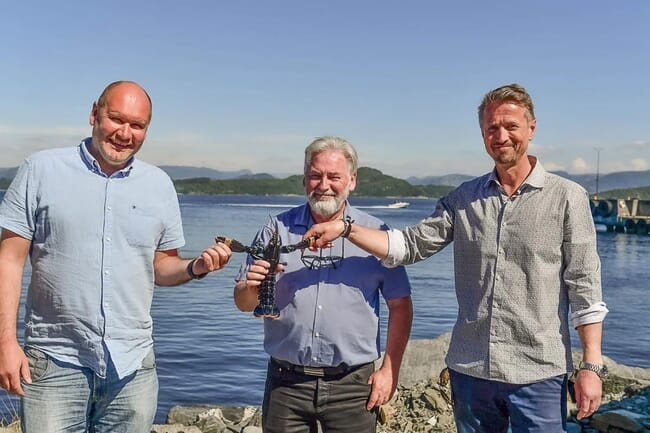
Norwegian Lobster Farm claims to be the first company in the world to produce market-sized lobsters in a land-based fish farm. Their current facilities use recycling aquaculture technology (RAS) as well as advanced robotics, computer vision systems and automatic and continuous monitoring of each individual lobster. To grow optimally, the lobster needs a temperature of 20°C in the seawater. This is exactly the temperature of the seawater that has been used to cool the IT equipment in Green Mountain’s data centre. Green Mountain can therefore deliver this heated wastewater directly to the fish farm.
Norwegian Lobster Farm produces lobsters that are 20 cm long and weigh about 250 grams, and is thus below the minimum size for wild-caught lobsters.
Cooling a data centre usually accounts for an additional 40-80 percent of the electricity required to power the servers. At Green Mountain’s DC1-Stavanger, an innovative fjord cooling solution is used for this purpose – seawater enters the facility at 8°C, before being released back into the fjord at 20°C. Norwegian Lobster Farm therefore plans to build a new production facility adjacent to the data centre, enabling the company to reuse the energy and nullifying the need for complicated RAS technology.
“In practical terms, this means that we can scale-up production. We can reduce technical risk, and save both CAPEX and OPEX. In addition to the environmental benefits, of course. “, said Asbjørn Drengstig, CEO of Norwegian Lobster Farm.
According to NLF, land-based lobster farming is certainly challenging, but the market opportunities are enormous, especially since the lobster population in Europe is declining. The company has spent several years on research and development. They have secured EU funding through the Horizon 2020 Grant Agreement NO880911 and the EuroStars programs. Drengstig expects being able to start construction of the production facility this year.
“For a long time, we have explored various methods to reuse the waste heat from our data center. Here at Rennesøy, which is sparsely populated, district heating is not a sensible alternative. This project, on the other hand, fits like a glove. Thus, we hope we can expand this and similar concepts to our future facilities as well,“ said Green Mountain CEO Tor Kristian Gyland.



